The outlook for the audio post market last year looked grim, especially among the smaller specialists. A lack of work and a decrease in rates was attributed to instability right at the start of the production chain.
As production budgets got tighter, producers and directors who may previously have chosen audio services on the basis of existing relationships decided to shop around - leaving the bigger, complete full-service facilities to offer budget-hugging “one-stop shop” deals.
The good news for 2008 is that things are looking up, as both audio-only facilities and one-stop shops report an upturn in business. “It feels better this year and much busier,” says Robert Butler-Biggs, owner and dubbing mixer at Fitzrovia. Animation in particular has boosted the audio specialist's production slate as it works on 78 new episodes of Charlie and Lola and a new 52 x 10-minute Kenyan co-production with Tiger Aspect, Tinga Tinga Tales.
Investing in equipment
According to Aquarium's Bafta-winning dubbing mixer Ben Baird, the audio-only facility was confident enough in its steady flow of business to invest in a 5.1 surround sound dubbing theatre and increase its staff numbers from nine to 16. The facility is also testimony to the fact that business based on relationships, as opposed to rates, has not completely died a death in Soho.
Baird explains: “We have four key people working with directors and producers who are moving on to bigger things which we are expanding to accommodate.”
Bigger facilities also maintain that business has never been better. The Farm Group's technical director, David Klafkowski, says that the group's seven 5.1 audio suites are always full, with seven track layers working on a mix of documentary, light entertainment and drama. Recent audio productions to have gone through The Farm's doors include ITV's Britain's Got Talent, Sky One's Ross Kemp on Gangs and Channel 4's Peep Show.
Regionally, Sumners managing director Andy Sumner has noticed a surge in drama work in the north-west as the BBC starts to realise its plan to make half of its programming outside London by 2016. The facility currently does the audio for BBC1's Waterloo Road, new BBC3 comedy Massive and Dragons' Den for BBC2, which is filmed in Pinewood Studios, recorded onto disc and sent to Manchester for post.
However, not every facility escaped last year's rough patch unscathed. Last month Videosonics, which had been trading as a television and film sound company for more than 20 years, was forced into liquidation.
The firm's managing director, Dennis Weinreich, blamed harsh trading conditions and the Treasury's new tax relief rules, which eliminate the incentives for film co-productions, which accounted for 75% of the facility's income.
While APA Post, a dormant company registered by Videosonics, has been activated to deal with Videosonics' existing projects, Weinreich says that it is unlikely the new company will pick up where Videosonics left off.
“The door is open, should the backers want to continue, but there would have to be a sufficient amount of new work to justify it,” he reasons - though he personally hopes to remain in the industry.
Other facilities are still experimenting with film co-production, albeit on a smaller scale. While TV continues to be Molinare's heartland, accounting for 75% of its business, the one-stop shop has grown its film business to 25% and in some instances acts as a co-producer. For joint managing director Steve Milne it's about having a passion for a project and being a little bit shrewd.
He says: “We've posted around 80 feature films and for 10% of these have acted as co-producers. But we're not prescriptive about it. We only take on people and projects we like and if we believe the films are commercially sensible. We have to invest where we believe we are going to make some kind of return.”
Meanwhile, for the majority of people on the television side of audio, the biggest threat to their business is still rate cutting, as Baird points out. “Rates are remaining the same but in real terms they are going down [due to inflation] and I suspect that we are going to see some serious undercutting going on as the large facilities with large investments need to get work, no matter what, through the door.”
One company often accused of driving rates down is Ascent Media, but, according to David Old, head of audio at Ascent facility St Anne's Post, the facility is simply responding to market forces. “The reality is that it's a buyers' market. There is an excess of companies offering sound services and clients are demanding competitive pricing.
“Budgets are being eroded and this is where places like ours come into their own because we can afford to package more competitively. It does put pressure on the specialists, but that is a reality of life, not a conscious effort to put them out of business,” he says.
Tricky relationships
However, what specialists do object to are big all-in deals offered by some of the larger suppliers whereby audio is bundled into a wider package of services, leaving producers no choice about who to use for their audio. “There are plenty of producers who have relationships with dubbers in larger facilities and that's a totally valid reason for using a one-stop shop - but it's when [the production] becomes forced to work with [the big facilities] that it becomes a problem,” says Baird.
Last year post and technology trade association UK Screen looked into setting up a code of best practice between facilities and producers to avoid rate-cutting and last-minute cancellations.
According to the trade body's chief executive, Gaynor Davenport, the code proved impossible to implement within the UK's diverse post community, with non-members unwilling to acknowledge it and many firms basing their businesses on different models. “We decided that our resources would be best used in getting people together so that everyone knows what is going on in each other's businesses,” she says.
“We want to work with producers and show them what kind of effect their decision-making has on suppliers; how they can benefit from good service at reasonable rates and the implications that last-minute cuts can have on a facility's business,” Davenport adds.
Another option open to smaller specialists looking to stay afloat is to diversify into video or merge with a picture post facility. Weinreich says that 18 months ago Videosonics looked into merging “but the right company never came along.” He adds that the now defunct one-stop shop Oasis was one of the firms lined up for a potential merger.
According to Baird, Aquarium also experienced a brief foray into video, before shutting the department down and “concentrating on what we're good at.”
Others appear to have made the transition more successfully. Two years ago Air Studios amalgamated its sound facilities with Strongroom's editing service to form Breathe. According to Breathe director of business development Rob Kelly the move required a great deal of research into offering the right kit and workflows for HD post. Kelly adds that the effort was worth it with the move into video bringing the company even more audio work.
Exploring new areas
Diversification is also working for video companies making a move into audio. Spurred on by client demand, Unit, a facility based around Apple's Final Cut Pro HD workflow, expanded into audio last November. A 5.1-capable Protools audio suite was built next door to the main facility and headed by dubbing mixer Kim Storey, with recent work including the Discovery Channel's Deadliest Catch and a Timewatch show on the last day of the First World War.
“Initially we set up audio to cater for existing clients but now we are getting audio-only work,” says Unit facilities director Luke Colson.
He adds that Unit's Apple workflow recently attracted a BBC production that uses Final Cut Pro for the edit and colour - and chose Unit because it would import and export audio files in a compatible media.
While productions experiment with taking some or all of their video post in-house using tools such as Final Cut Pro, most are happy to leave sound to the specialists - housed in big facilities or small audio boutiques.
As Sumner says, “audio is one of those services where nothing has come along to supersede it or do its job.” He adds that the high technical standards required for broadcasting a show mean that producers have no option but to have their audio editing carried out by a professional.
Consequently, as Klafkowski points out, a soundproofed studio with the correct acoustics is worth its weight in gold. “In real estate terms, an audio studio is worth a lot as the kit is not something you can just put in a room. It has to be constructed.”
And Molinare's Milne has a warning for producers willing to cut corners on their audio, as well as broadcasters willing to show the result: you will soon be rumbled by the viewers. “Rate-cutting equals quality-cutting at a time when the quality of home cinema sound systems is going up. Viewers are going to start to demand more,” he says.
Audio case study: Curse of Comedy
Breathe completed the entire post on three out of four programmes in the BBC4 Curse of Comedy drama season, which looked at the troubled lives of comedians including Frankie Howerd and Tony Hancock.
It was also the first major project to make use of Breathe's cross-site workflow facilitated by Breathe's recent investment in Sohonet.
A direct fibre link between its Shoreditch and Hampstead facilities enabled the movement of media between the picture and audio teams as well as remote client review of work-in-progress.
Sound was shot on set using Deva multichannel hard disk recorders and while in post track-lay, Foley and sound design were created by Paul Langwade and Anna Sculley.
Langwade used some original archive recordings of studio audiences from his days at Thames Television to provide an authentic “period” sound to the numerous studio scenes in each drama.
The ADR, dialogue edit, with pre-mixes and final mixes were carried out by Pip Norton.
Audio case study: War Oratorio
Aquarium Studios carried out the audio for More 4's War Oratario, which traces a day in the life of three people caught up in the horror of modern war. A collaboration between director James Kent, poet Michael Symmons Roberts and classical composer Dominic Muldowney, the 90-minute piece questions how we perceive our world at war and explores how music can shape our reaction to conflict.
The documentary location soundtrack relied upon Paul Paragon's recording skills, which were put to the test in sometimes dangerous conditions in Uganda, Afghanistan and Kashmir.
Muldowney composed an original score, while Michael Symmons Roberts wrote the libretto with the words taken from interviews with subjects in the war zones.
To complete Kent's vision, the challenge for dubbing mixer Ben Baird was to achieve a balance between the documentary, orchestral and choral elements. He approached the sound design with a view to reflecting the composition while respecting the scenes of grief and torment. The mix was completed at Aquarium Studios.


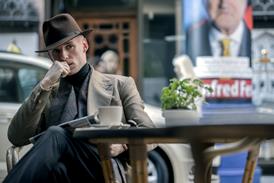




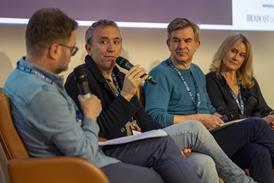
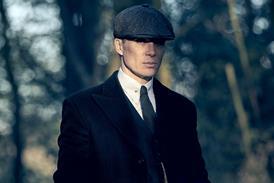



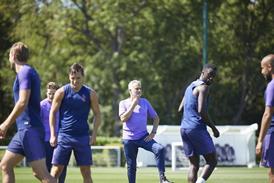
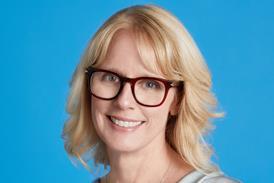
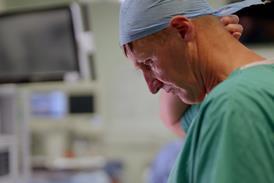














No comments yet